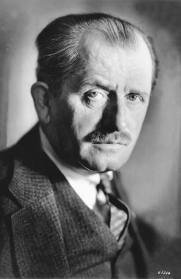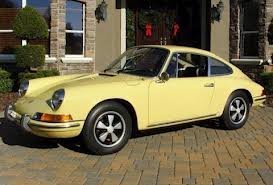
The process for packaging 'cask wine' (boxed wine) was invented by Thomas Angove, a winemaker from Renmark, South Australia, and patented by his company on April 20, 1964. Polyethylene bladders of one gallon were placed in corrugated boxes for retail sale. The original design required that the consumer cut the corner off the bladder, pour out the serving of wine and then reseal it with a special peg. This design was based on a product already on the market, which was a bag in a box used by mechanics to hold and transport battery acid.
In 1967, Australian inventor Charles Malpas and Penfolds Wines patented a plastic, air-tight tap welded to a metallised bladder, making storage more convenient. All modern wine casks now use some sort of plastic tap, which is exposed by tearing away a perforated panel on the box. For the next decades bag in a box packaging was primarily preferred by producers of less expensive wines as it is cheaper to fabricate and distribute than glass flagons, which served a similar market.
In Australia, due to the difference in how wine is taxed compared to other alcoholic beverages, boxed wine is often the cheapest form of drinkable alcohol. A 4-litre cask of at least 9.5% alcohol can often be found for around A$10. These attributes have led to boxed wine being widely available throughout Australia and holding a prominent place in Australian pop culture.
During the mid-1970s, the bag in box packaging concept expanded to other beverages including spring waters, orange juices, and wine coolers. Today, however, wine and spring water are the main two beverages packed into these bags.
In 2003, California Central Coast AVA based Black Box Wines introduced mass premium wines in a box. Within the decade, premium wineries and bottlers began packaging their own high-quality boxed wine. This coupled with an increased cultural interest in environmentally sustainable packaging has cultivated growing popularity with affluent wine consumers.
Bag-in-box packaging is less expensive and lighter than glass-bottled wine.
Tyler Colman from New York Times opined that it is more environmentally friendly than bottled wine as well as being easier to transport and store. Typical bag-in-box containers hold one and a half to four 750 ml bottles of wine per box, though they come in a wide variety of volumes.
The fact that wine is removed from the flexible bag without adding air to fill the vacated space greatly reduces oxidation of the wine during dispensing. Compared to wine in a bottle which should be consumed within hours or days of opening, bag-in-box wine is not subject to cork taint and will not spoil for approximately 3–4 weeks after breaking the seal.
Wine contained in plastic bladders is not intended for cellaring and should be consumed within the manufacturer printed shelf life. Deterioration may be noticeable by 12 months after filling.
Colloquialisms
In Australia, boxed wine is more commonly referred to by the colloquial name "Goon". The cardboard box is referred to as a "Goon Box" and the bag within is referred to as a "Goon Bag".
The word Goon is derived from the word Flagon, which is a traditional vessel used for storing wine. The local Australian pronunciation of the word Flagon placed emphasis on the second syllable such that Flagon came to be pronounced as "Fla-goon", which was then shortened to simply "Goon".
What do you make on a Sunday Night when you want to wrap up the weekend by cooking up a meal that'll leave 'em full and ready to start the week? We've got an idea! It's Sunday Night Noodles! The whole family will love this easy, creamy dinner recipe.
- 1 (16-ounce) package medium egg noodles
- 1 (10-ounce) package frozen chopped spinach, thawed and drained
- 2 cups cottage cheese
- 1/2 cup grated Parmesan cheese
- 1 (16-ounce) container sour cream
- 1 1/2 teaspoons salt
- 1/2 teaspoon black pepper
- 1 teaspoon Italian seasoning
- 1 tablespoon butter, melted
- 1/4 cup dry bread crumbs
- Preheat oven to 350º. Coat a 9- x 13-inch baking dish with cooking spray.
- In a large pot of boiling salted water, cook noodles to desired doneness; drain.
- In a large bowl, mix spinach, cottage cheese, Parmesan cheese, sour cream, salt, pepper, and Italian seasoning. Stir in noodles, then spoon mixture into prepared baking dish. In a small bowl, combine melted butter and bread crumbs. Sprinkle over noodles.
- Cover and bake 45 minutes, or until heated through. Serve immediately.
***Make this an all-in-one meal by adding some cooked chicken or diced ham. Yum!

On September 3 National Cinema Day celebrates movie lovers across the country and encourages them to return to the theater and enjoy a movie on the big screen.
We all have memories of going to the movie theater. The excitement we felt waiting in anticipation for our favorite movie star to appear on the screen was exciting. No movie was complete without a box of fresh buttered popcorn and our favorite drink in hand. If we were lucky, we were able to get some candy, too. On National Cinema Day, everyone is encouraged to go to a movie and relive that special feeling of seeing your favorite movie star on the big screen.
Behind the Scenes
Movies have been around since the late 1800s. Louis Le Prince receives credit for coming up with the idea of moving images on a screen. His Praxinoscope invention was a single-lens camera that had the ability to take 12 frames per second. Le Prince was in the process of patenting his invention when he was killed by an unknown person. Even though he met his demise, Le Prince was the inspiration for an industry that awes us just as much as the original movies did.
Who invented motion pictures? Thomas Edison receives the credit for inventing the first device to show a motion picture. In fact, Edison would be the first to commercially sell his kinetoscope invention even though he was skeptical about his idea. Interestingly, the device would be used in public kinetoscope parlors for public view. By 1915, small theaters were set up in storefronts to view a motion picture known as nickelodeons.
Early Motion Pictures
- 1891 – Dickson Greeting
- 1893 – Blacksmith Scene
- 1895 – The Execution of Mary Stuart
- 1896 – Le Manoir du diable (The House of the Devil)
- 1902 – A Trip to the Moon (1902)
Motion pictures have come a long way since the beginning. As technology has improved, so has the production of what we view on the screen. During the early years of movie production, the audience was awed by the ability to view moving people on the screen. Movies were in black and white and had no sound. Most of the time, live music was playing within a theater as the film moved on the screen. Today, movie goers expect to see amazing graphics, realistic stunts, and hear astounding music scores.
CINEMA CELEBRATIONS
- Go to the movie with family and friends.
- Buy movie tickets as a gift.
- Rent a movie theater for a private party viewing.
- Research the history of the movies.
- Purchase movie tickets for $3 on National Cinema Day.
THROUGH THE LENS
This celebration is being promoted by The National Association of Theater Owners and The Cinema Foundation to encourage people to head to the theater. The foundation is offering special pricing of $3 movies at participating theaters as a way to celebrate today. If you would like more information about a participating theater in your area, visit www.nationalcinemaday.org.












